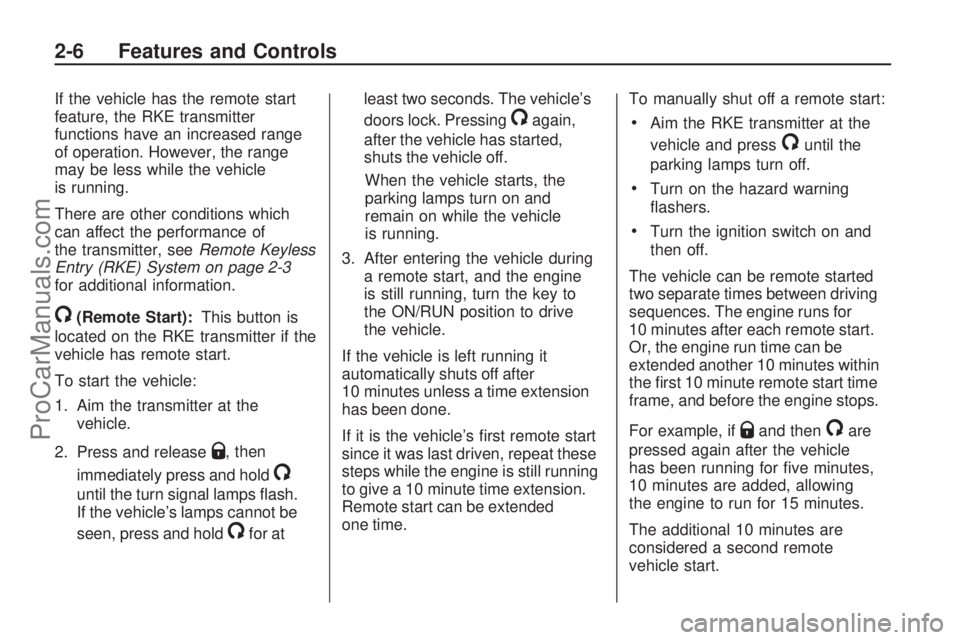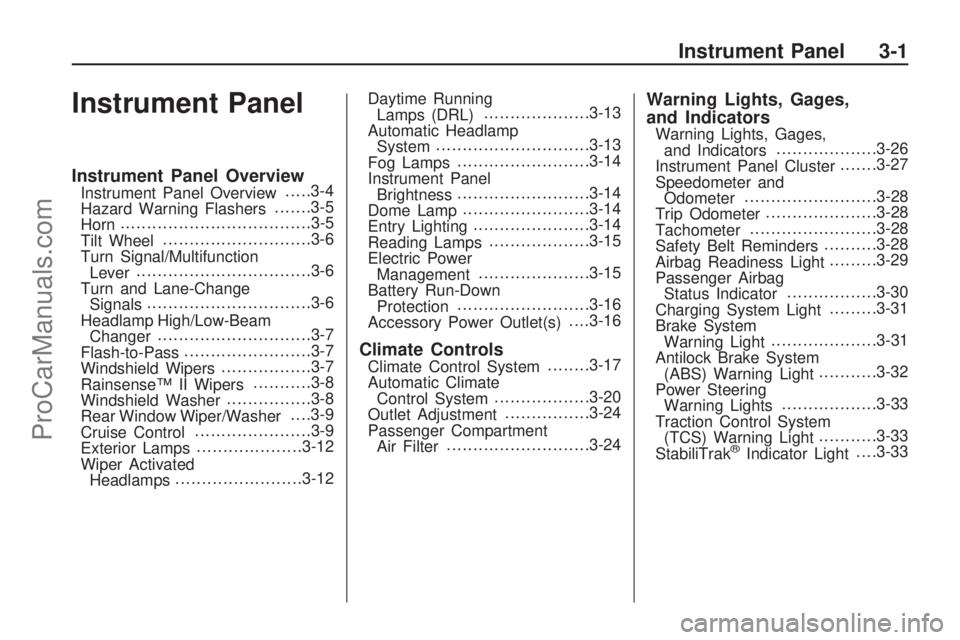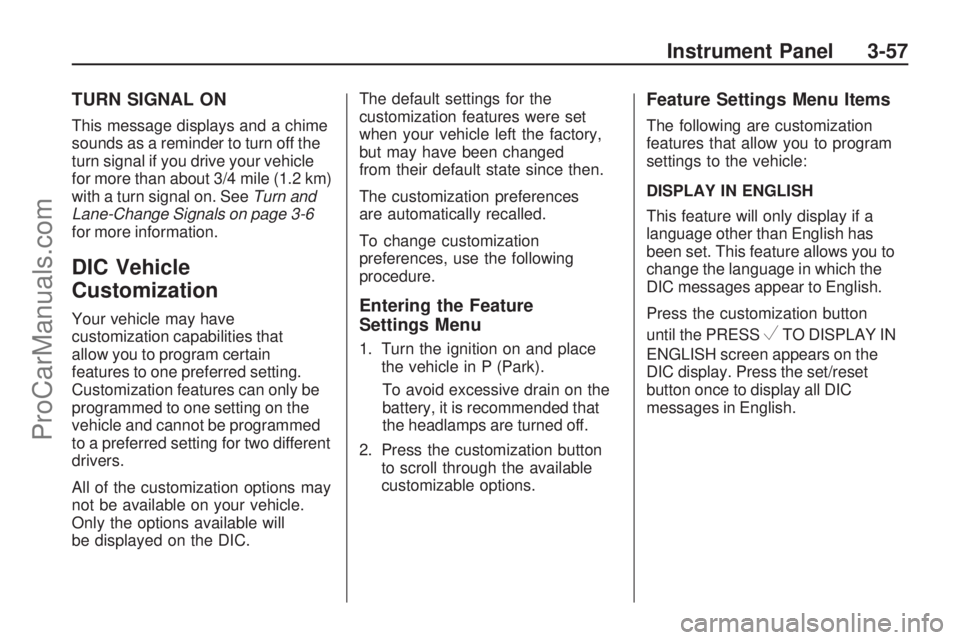turn signal SATURN VUE 2009 Owners Manual
[x] Cancel search | Manufacturer: SATURN, Model Year: 2009, Model line: VUE, Model: SATURN VUE 2009Pages: 386, PDF Size: 2.3 MB
Page 68 of 386

Remote Keyless Entry
(RKE) System Operation
The Remote Keyless Entry (RKE)
transmitter functions work up to
195 feet (60 m) away from the
vehicle.
There are other conditions which
can affect the performance of the
transmitter. SeeRemote Keyless
Entry (RKE) System on page 2-3.
/(Remote Vehicle Start):
For vehicles with this feature, this
button is used to operate the remote
start feature. SeeRemote Vehicle
Start on page 2-5for additional
information.
Q(Lock):Press to lock all the
doors, including the liftgate.
K(Unlock):Press once to unlock
the driver door. If
Kis pressed again
within �ve seconds, all remaining
doors unlock. The interior lamps
come on and stay on for 20 seconds
or until the ignition is turned on.
L(Vehicle Locator/Panic Alarm):
Press and release to locate the
vehicle. The turn signal lamps �ash
and the horn sounds three times.
Press and hold
Lto activate the
panic alarm. The turn signal lamps
�ash and the horn sounds repeatedly
for 30 seconds. The alarm turnsoff when the ignition is turned to
ON/RUN or when
Lis pressed
again. The ignition must be in
LOCK/OFF for the panic alarm
to work.
Programming Transmitters
to the Vehicle
Only RKE transmitters
programmed to the vehicle
will work. If a transmitter is lost
or stolen, a replacement can be
purchased and programmed
through your dealer/retailer.
When the replacement transmitter
is programmed to the vehicle, all
remaining transmitters must also
be programmed. Any lost or stolen
transmitters no longer work once
the new transmitter is programmed.
Each vehicle can have up to eight
transmitters programmed to it.
See “Relearn Remote Key” under
DIC Operation and Displays on
page 3-42. Without Remote Start Shown
(With Remote Start Similar)
2-4 Features and Controls
ProCarManuals.com
Page 70 of 386

If the vehicle has the remote start
feature, the RKE transmitter
functions have an increased range
of operation. However, the range
may be less while the vehicle
is running.
There are other conditions which
can affect the performance of
the transmitter, seeRemote Keyless
Entry (RKE) System on page 2-3
for additional information.
/(Remote Start):This button is
located on the RKE transmitter if the
vehicle has remote start.
To start the vehicle:
1. Aim the transmitter at the
vehicle.
2. Press and release
Q, then
immediately press and hold
/
until the turn signal lamps �ash.
If the vehicle’s lamps cannot be
seen, press and hold
/for atleast two seconds. The vehicle’s
doors lock. Pressing
/again,
after the vehicle has started,
shuts the vehicle off.
When the vehicle starts, the
parking lamps turn on and
remain on while the vehicle
is running.
3. After entering the vehicle during
a remote start, and the engine
is still running, turn the key to
the ON/RUN position to drive
the vehicle.
If the vehicle is left running it
automatically shuts off after
10 minutes unless a time extension
has been done.
If it is the vehicle’s �rst remote start
since it was last driven, repeat these
steps while the engine is still running
to give a 10 minute time extension.
Remote start can be extended
one time.To manually shut off a remote start:Aim the RKE transmitter at the
vehicle and press
/until the
parking lamps turn off.
Turn on the hazard warning
�ashers.
Turn the ignition switch on and
then off.
The vehicle can be remote started
two separate times between driving
sequences. The engine runs for
10 minutes after each remote start.
Or, the engine run time can be
extended another 10 minutes within
the �rst 10 minute remote start time
frame, and before the engine stops.
For example, if
Qand then/are
pressed again after the vehicle
has been running for �ve minutes,
10 minutes are added, allowing
the engine to run for 15 minutes.
The additional 10 minutes are
considered a second remote
vehicle start.
2-6 Features and Controls
ProCarManuals.com
Page 97 of 386

The back of the vehicle is in
an accident, the position and
mounting angle of the camera
can change or the camera can
be affected. Be sure to have the
camera and its position and
mounting angle checked at your
dealer/retailer.
There are extreme temperature
changes.
The rear vision camera system
display in the rearview mirror may
turn off or not appear as expected
due to one of the following
conditions. If this occurs the left
indicator light on the mirror will �ash.
A slow �ash may indicate a loss of
video signal, or no video signal
present during the reverse cycle.
A fast �ash may indicate that
the display has been on for the
maximum allowable time during a
reverse cycle, or the display has
reached an Over Temperature
limit.
The fast �ash conditions are used
to protect the video device from
high temperature conditions.
Once conditions return to normal
the device will reset and the green
indicator will stop �ashing.
During any of these fault conditions,
the display will be blank and the
indicator will continue to �ash as long
as the vehicle is in R (Reverse) or
until the conditions return to normal.
Pressing and holding
zwhen the
left indicator light is �ashing will turn
off the video display along with
the left indicator light.
OnStar®System
OnStar uses several innovative
technologies and live advisors to
provide a wide range of safety,
security, information, and
convenience services. If the airbags
deploy, the system is designed to
make an automatic call to OnStar
Emergency advisors who can
request emergency services be sent
to your location. If the keys are
locked in the vehicle, call OnStar at
1-888-4-ONSTAR to have a signal
sent to unlock the doors. OnStar
Hands-Free Calling, including
30 trial minutes good for 60 days, is
available on most vehicles. OnStar
Turn-by-Turn Navigation service,
with one trial route, is available on
most vehicles. Press the OnStar
button to have an OnStar advisor
contact Roadside Service.
Features and Controls 2-33
ProCarManuals.com
Page 103 of 386

2. Hold the end of your hand-held
transmitter about 1 to 3 inches
(3 to 8 cm) away from the
Universal Home Remote buttons
while keeping the indicator light in
view. The hand-held transmitter
was supplied by the manufacturer
of your garage door opener
receiver (motor head unit).
3. At the same time, press and hold
both the Universal Home Remote
button to be used to control the
garage door and the hand-held
transmitter button. Do not release
the Universal Home Remote
button or the hand-held
transmitter button until Step 4
has been completed.
Some entry gates and
garage door openers may
require substitution of Step 3
with the procedure noted in
“Gate Operator and Canadian
Programming” later in this
section.4. The indicator light on the
Universal Home Remote will
�ash slowly at �rst and then
rapidly after Universal Home
Remote successfully receives
the frequency signal from the
hand-held transmitter. Release
both buttons.
5. Press and hold the newly-trained
Universal Home Remote button
and observe the indicator light.
If the indicator light stays on
continuously, the programming is
complete and the garage door
should move when the Universal
Home Remote button is pressed
and released. There is no need to
continue programming Steps 6
through 8.
If the Universal Home Remote
indicator light blinks rapidly
for two seconds and then turns
to a constant light, continue
with the programming Steps 6
through 8.It may be helpful to have another
person assist with the remaining
steps.
6. After Steps 1 through 5 have
been completed, locate inside
the garage the garage door
opener receiver (motor-head
unit). Locate the “Learn” or
“Smart” button. The name and
color of the button may vary
by manufacturer.
Features and Controls 2-39
ProCarManuals.com
Page 104 of 386

7. Firmly press and release the
“Learn” or “Smart” button.
After you press this button,
you will have 30 seconds
to complete Step 8.
8. Immediately return to the vehicle.
Firmly press and hold the
Universal Home Remote button,
chosen in Step 3 to control the
garage door, for two seconds,
and then release it. If the garage
door does not move, press and
hold the same button a second
time for two seconds, and then
release it. Again, if the door does
not move, press and hold the
same button a third time for
two seconds, and then release.
The Universal Home Remote
should now activate the
garage door.
To program the remaining two
Universal Home Remote buttons,
begin with Step 2 of “Programming
the Universal Home Remote
System.” Do not repeat Step 1,as this will erase all previous
programming from the Universal
Home Remote buttons.
Gate Operator and Canadian
Programming
If you have questions or need
help programming the Universal
Home Remote System, call
1-800-355-3515 or go to
homelink.com.
Canadian radio-frequency laws
require transmitter signals to time
out or quit after several seconds
of transmission. This may not be
long enough for Universal Home
Remote to pick up the signal during
programming. Similarly, some U.S.
gate operators are manufactured to
time out in the same manner.
If you live in Canada, or you are
having difficulty programming a
gate operator or garage door opener
by using the “Programming Universal
Home Remote” procedures,regardless of where you live,
replace Step 3 under “Programming
Universal Home Remote” with the
following:
Continue to press and hold the
Universal Home Remote button
while you press and release every
two seconds (cycle) the hand-held
transmitter button until the frequency
signal has been successfully
accepted by the Universal Home
Remote. The Universal Home
Remote indicator light will �ash
slowly at �rst and then rapidly.
Proceed with Step 4 under
“Programming Universal Home
Remote” to complete.
Using Universal Home Remote
Press and hold the appropriate
Universal Home Remote button for at
least half of a second. The indicator
light will come on while the signal is
being transmitted.
2-40 Features and Controls
ProCarManuals.com
Page 111 of 386

Instrument Panel
Instrument Panel OverviewInstrument Panel Overview.....3-4
Hazard Warning Flashers.......3-5
Horn....................................3-5
Tilt Wheel............................3-6
Turn Signal/Multifunction
Lever.................................3-6
Turn and Lane-Change
Signals...............................3-6
Headlamp High/Low-Beam
Changer.............................3-7
Flash-to-Pass........................3-7
Windshield Wipers.................3-7
Rainsense™ II Wipers...........3-8
Windshield Washer................3-8
Rear Window Wiper/Washer. . . .3-9
Cruise Control......................3-9
Exterior Lamps....................3-12
Wiper Activated
Headlamps........................3-12Daytime Running
Lamps (DRL)....................3-13
Automatic Headlamp
System.............................3-13
Fog Lamps.........................3-14
Instrument Panel
Brightness.........................3-14
Dome Lamp........................3-14
Entry Lighting......................3-14
Reading Lamps...................3-15
Electric Power
Management.....................3-15
Battery Run-Down
Protection.........................3-16
Accessory Power Outlet(s). . . .3-16
Climate ControlsClimate Control System........3-17
Automatic Climate
Control System..................3-20
Outlet Adjustment................3-24
Passenger Compartment
Air Filter...........................3-24
Warning Lights, Gages,
and Indicators
Warning Lights, Gages,
and Indicators...................3-26
Instrument Panel Cluster.......3-27
Speedometer and
Odometer.........................3-28
Trip Odometer.....................3-28
Tachometer........................3-28
Safety Belt Reminders..........3-28
Airbag Readiness Light.........3-29
Passenger Airbag
Status Indicator.................3-30
Charging System Light.........3-31
Brake System
Warning Light....................3-31
Antilock Brake System
(ABS) Warning Light...........3-32
Power Steering
Warning Lights..................3-33
Traction Control System
(TCS) Warning Light...........3-33
StabiliTrak
®Indicator Light. . . .3-33
Instrument Panel 3-1
ProCarManuals.com
Page 115 of 386

The main components of the
instrument panel are the following:
A.Outlet Adjustment on
page 3-24.
B.Instrument Panel Brightness on
page 3-14.
C.Turn Signal/Multifunction Lever
on page 3-6.
D.Instrument Panel Cluster on
page 3-27.
E.Windshield Wipers on page 3-7.
F.Audio System(s) on page 3-64.
G. Auxiliary Input Jack.
SeeRadio(s) on page 3-67.
H.Fog Lamps on page 3-14.
Exterior Lamps on page 3-12.
I.Driver Information Center (DIC)
on page 3-42.
J.Instrument Panel Storage on
page 2-42.
K.Hood Release on page 5-11.
L.Cruise Control on page 3-9.
M.Tilt Wheel on page 3-6.N.Horn on page 3-5.
O.Audio Steering Wheel Controls
on page 3-92.
P.Rear Window Wiper/Washer on
page 3-9.
Q.Traction Control System (TCS)
on page 4-8.
R. Shift Lever. SeeAutomatic
Transmission Operation
(Uplevel) on page 2-19or
Automatic Transmission
Operation (Base) on page 2-22.
S.Climate Control System on
page 3-17orAutomatic Climate
Control System on page 3-20
(If Equipped).
T.Hazard Warning Flashers on
page 3-5.
U.Passenger Airbag Status
Indicator on page 3-30.
V.Safety Belt Reminders on
page 3-28.
W.Glove Box on page 2-41.Hazard Warning Flashers
|
(Hazard Warning Flasher):
Press this button located on the
instrument panel, to make the front
and rear turn signal lamps �ash on
and off. This warns others that you
are having trouble.
Press
|again to turn the
�ashers off.
Horn
Press near or on the horn symbols
on the steering wheel pad to sound
the horn.
Instrument Panel 3-5
ProCarManuals.com
Page 116 of 386

Tilt Wheel
The tilt lever lets the steering wheel
be adjusted.
The tilt lever is located on the left
side of the steering column.
To adjust the steering wheel,
hold the wheel and push the lever
down. Then move the wheel to
a comfortable position and pull the
lever up �rmly to lock the steering
column in place.
Turn Signal/Multifunction
Lever
The lever on the left side of the
steering column includes:
G:Turn and Lane-Change
Signals
3:Headlamp High/Low-Beam
Changer
Flash-to-Pass Feature.
Information for these features is on
the pages following.
Turn and Lane-Change
Signals
An arrow on the instrument panel
cluster �ashes in the direction of
the turn or lane change.
Move the lever all the way up or
down to signal a turn.
Raise or lower the lever until
the arrow starts to �ash and then
release, to signal a lane change.
The turn signal �ashes automatically
three times.
The lever returns to its starting
position whenever it is released.
If after signaling a turn or lane
change the arrow �ashes rapidly or
does not come on, a signal bulb
may be burned out.
3-6 Instrument Panel
ProCarManuals.com
Page 117 of 386

Have the bulbs replaced. If a bulb
is not burned out, check the fuse.
SeeFuses and Circuit Breakers on
page 5-80and for burned-out bulbs.
Headlamp High/
Low-Beam Changer
23
Headlamp High/Low Beam
Changer:Push the turn signal/
multifunction lever away from you
to turn the high beams on.
Pull the lever towards you to return to
low beams.
This indicator light turns on in the
instrument panel cluster when the
high beam headlamps are on.
Flash-to-Pass
This feature lets you use your
high-beam headlamps to signal a
driver in front of you that you want
to pass.
To �ash the high beams from
low beam, pull the turn signal/
multifunction lever all the way
towards you. Then release it.
Windshield Wipers
The windshield wiper lever is
located on the right side of the
steering column.Push up or pull down on the lever
to place it in one of the following
positions.
8(Mist):For a single wiping
cycle. The lever returns to its
starting position when released.
For more cycles, hold the lever
down before releasing it.
9(Off):Turns the wipers off.
&(Intermittent):Sets a delay
between wipes. To set for a shorter
or longer delay between wipes,
move the switch on top of the
lever left or right to decrease
or increase wiper movement.
a(Low):For slow, steady wiping
cycles.
1(High):For rapid wiping cycles.
Clear ice and snow from the
wiper blades before using them.
If the wiper blades are frozen
to the windshield, gently
loosen or thaw them.
Instrument Panel 3-7
ProCarManuals.com
Page 167 of 386

TURN SIGNAL ON
This message displays and a chime
sounds as a reminder to turn off the
turn signal if you drive your vehicle
for more than about 3/4 mile (1.2 km)
with a turn signal on. SeeTurn and
Lane-Change Signals on page 3-6
for more information.
DIC Vehicle
Customization
Your vehicle may have
customization capabilities that
allow you to program certain
features to one preferred setting.
Customization features can only be
programmed to one setting on the
vehicle and cannot be programmed
to a preferred setting for two different
drivers.
All of the customization options may
not be available on your vehicle.
Only the options available will
be displayed on the DIC.The default settings for the
customization features were set
when your vehicle left the factory,
but may have been changed
from their default state since then.
The customization preferences
are automatically recalled.
To change customization
preferences, use the following
procedure.Entering the Feature
Settings Menu
1. Turn the ignition on and place
the vehicle in P (Park).
To avoid excessive drain on the
battery, it is recommended that
the headlamps are turned off.
2. Press the customization button
to scroll through the available
customizable options.
Feature Settings Menu Items
The following are customization
features that allow you to program
settings to the vehicle:
DISPLAY IN ENGLISH
This feature will only display if a
language other than English has
been set. This feature allows you to
change the language in which the
DIC messages appear to English.
Press the customization button
until the PRESS
VTO DISPLAY IN
ENGLISH screen appears on the
DIC display. Press the set/reset
button once to display all DIC
messages in English.
Instrument Panel 3-57
ProCarManuals.com